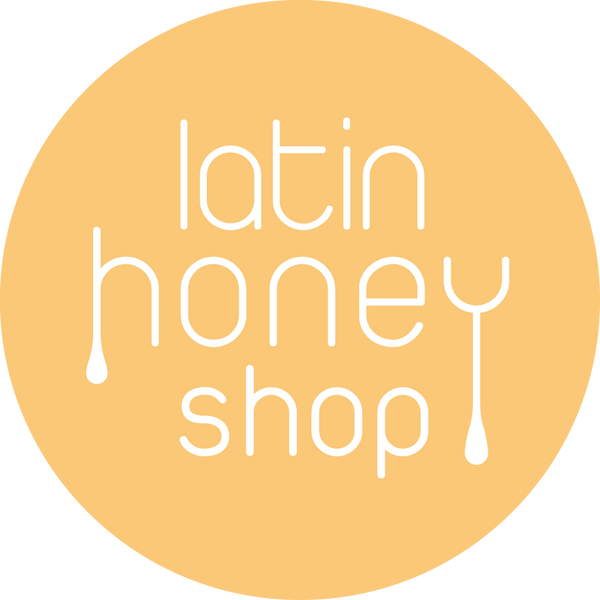Six Ways To Guarantee That Your Honey Is Free Of Harmful Chemicals
When was the last time you saw "Chinese honey" on sale in the supermarket? You probably cannot remember.
In 2018, over 35,000 tons of Chinese honey was imported into the United Kingdom. What happened to this honey? Where is it on sale?
If you have ever bought cheap commercially processed clear runny "honey" from the supermarket then the chances are that you are eating something that is mostly Chinese honey, heat-treated and blended with something else.
Scientific research published in the Science Journal in 2017 found that up to 75% of the world's honey is contaminated by chemicals that can be harmful to humans.
Scientists tested 198 honey samples from six continents and 75% of them contained at least one type of neonicotinoid chemical, a nerve agent pesticide that can be harmful to humans.
Concentrations of these pesticides were highest in samples from North America (86%), Asia (80%) and Europe (79%).
The lowest concentrations of pesticides were found in Latin America (57%).
This news may come as a shock to some but for us at the Latin Honey Shop it merely confirms what we already knew: consumers around the world are being scammed when it comes to honey.
The good news is that it is certainly still possible and easy to buy honey that is not contaminated with harmful chemicals that could harm you or your family.
Here are six quick things that you can check before you buy honey to make it more likely that the honey is not contaminated with harmful chemicals.
1. Is the name and address of the manufacturer or distributor on the label?
It is a legal requirement in the EU for all honey on the market to have the name and address of the producing or distributing company clearly marked on the label. A website, email address or mobile telephone number is not sufficient.
How much confidence would you have in eating a food product or giving it to your children when the person selling it is afraid to put their own details on the label?

2. Is there a country of origin marked on the label?
Do you know which country the honey comes from? If there is no specific country of origin marked on the label then the honey is a blend of honeys from around the world, some of which could be contaminated with harmful chemicals.
3. Is the honey legal?
Under EU directive 2016/601 only 44 countries from around the world are authorised to export honey to the EU. These 44 countries are countries whose authorities have satisfied the EU that their honey contains no chemicals, pesticides or antibiotics harmful to humans.
Before honey can be exported from any of these countries to the EU the government of that country has to issue a sanitary animal health certificate which accompanies the shipment of honey into the EU.
Port health veterinarians then inspect the consignment of honey when it enters the EU, sometimes physically opening the containers and testing them for harmful chemicals.
Here is the list of these 44 countries:
Andorra, Armenia, Argentina, Australia, Bosnia Herzegovina, Brazil, Canada, Switzerland, Chile, Cameroon, China, Cuba, Dominican Republic, Ethiopia, Ghana, Guatemala, Israel, India, Jamaica, Kyrgyzstan, Lebanon, Moldova, Montenegro, Madagascar, Macedonia, Mexico, New Caledonia, Nicaragua, New Zealand, Pitcairn Islands, Serbia, Russia, Rwanda, San Marino, El Salvador, Thailand, Turkey, Taiwan, Ukraine, Uganda, United States, Uruguay, Vietnam, Zambia.
Honey from any country not on this list on sale in the EU is illegal. It is either fake, or it is smuggled into the EU without a health certificate, or both.
So, for example, all "Yemeni" "Sidr" honey being sold in the EU is illegal because and has been smuggled into the EU without a health certificate and without a veterinary health inspection, because Yemen is not on this list.
This means that all "Yemeni" "Sidr" honey on sale in the UK may be unsafe to consume because its origin cannot be verified and because it may contain chemicals harmful to humans.
4. Is the honey in a plastic bottle or glass bottle?

At certain temperatures, plastic begins to release chemicals. Honey stored in plastic containers for years cannot be guaranteed free of chemicals.
5. Is the honey from a city or built-up area?

Honey from beehives situated on top of buildings or in areas where there are houses, factories, cars, trucks, roads, chemicals and rubbish bins is more likely to be contaminated with chemicals.
Local honey sounds very romantic but unless you live in a natural area far from houses and cars, then it is more likely to be full of chemicals and pesticides.
6. Is the honey organic? If so, is there an organic certification code and green EU organic symbol on the label?

Honey that is organic is certified by a third party government appointed organic control authority to be free of all chemicals from the point of production, all along the supply chain, and until it lands on your breakfast table.
In the EU, it is illegal to advertise or sell honey as "organic" without an organic certification code on the label.
If honey is not organic, it is still safe to consume providing it has been legally imported into the country. But if you only eat certified organic honey then you can be sure that your honey is 100% free of any chemical residue.
So next time you buy a jar of honey, think for a moment about what you are buying.


